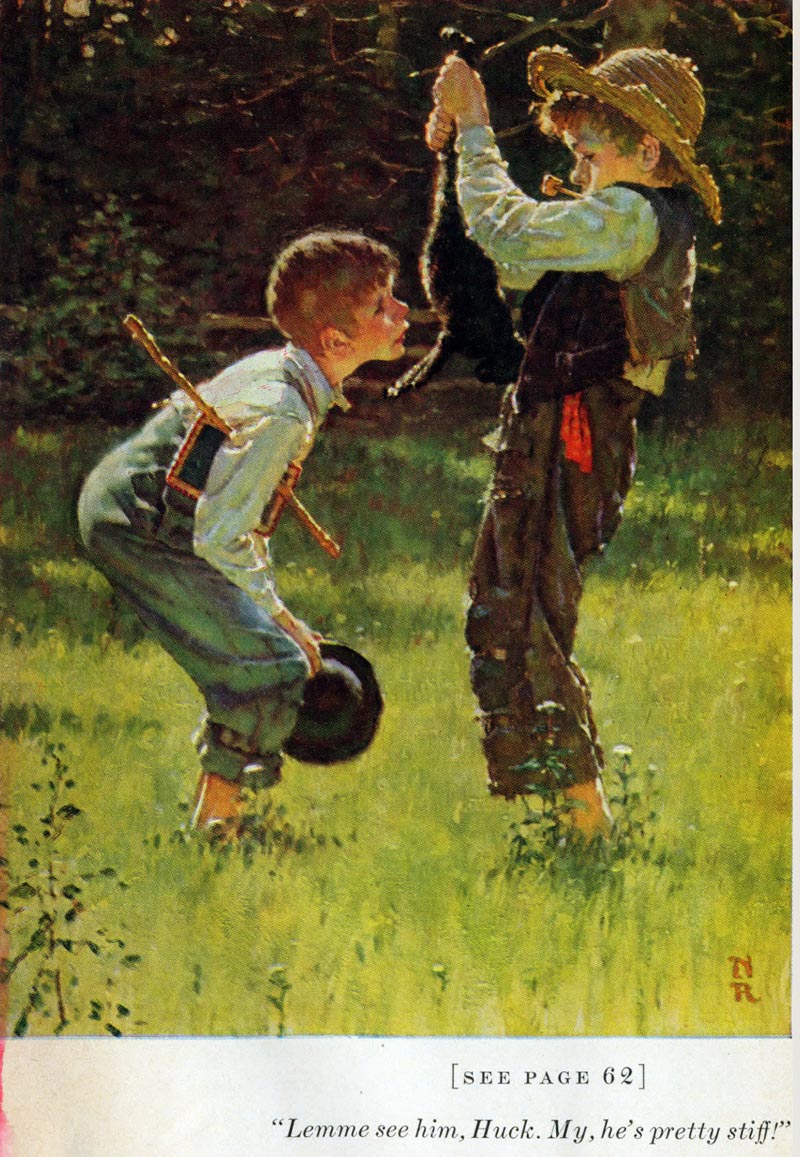
There’s no getting around it: Norman Rockwell was a square. There’s also no getting around the fact that his career helped define the way mainstream Americans saw themselves for decades. And while an artist like Rockwell—so steeped in nostalgia, so lacking in irony and a taste for transgression—might have faded into complete irrelevance amidst the tumult of the sixties, the opposite in fact occurred. Instead of pale, freckle-faced scamps and neighborly civil servants, Rockwell painted likenesses of world leaders like Nehru and Nasser, as well as a now iconic symbol of the Civil Rights struggle on a 1964 Look magazine cover.
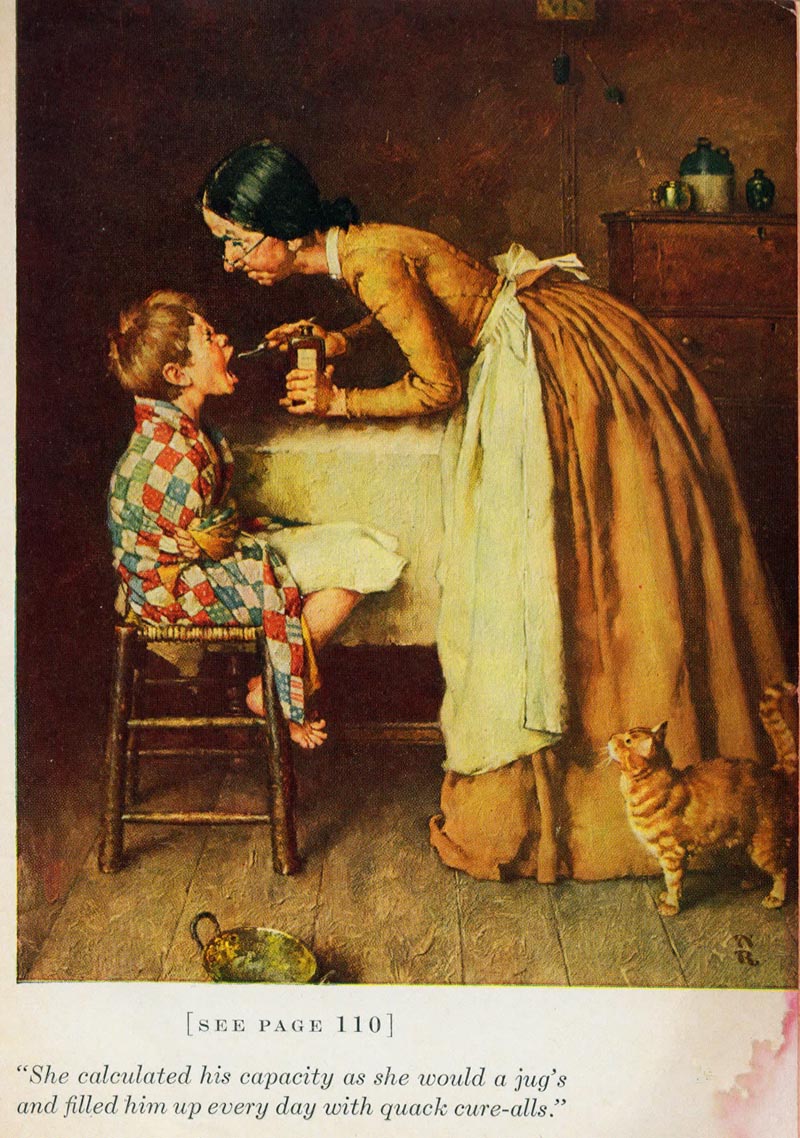
The sixties Rockwell, though still very much a purveyor of small town Americana, became a somewhat weightier figure, even if he never gained (or sought) acceptance in the art world. But we might think of Rockwell as working on two registers throughout his career—as the PG-rated painter of mischievous, childish niceness, and the earnest commentator on mores and values in adult society. In a way, these two sides of America’s most popular illustrator mirror those of the nation’s most popular writer, Mark Twain. Though separated by a generation, the two, writes the Mark Twain House & Museum’s website, are “twinned in many ways in the public consciousness.”
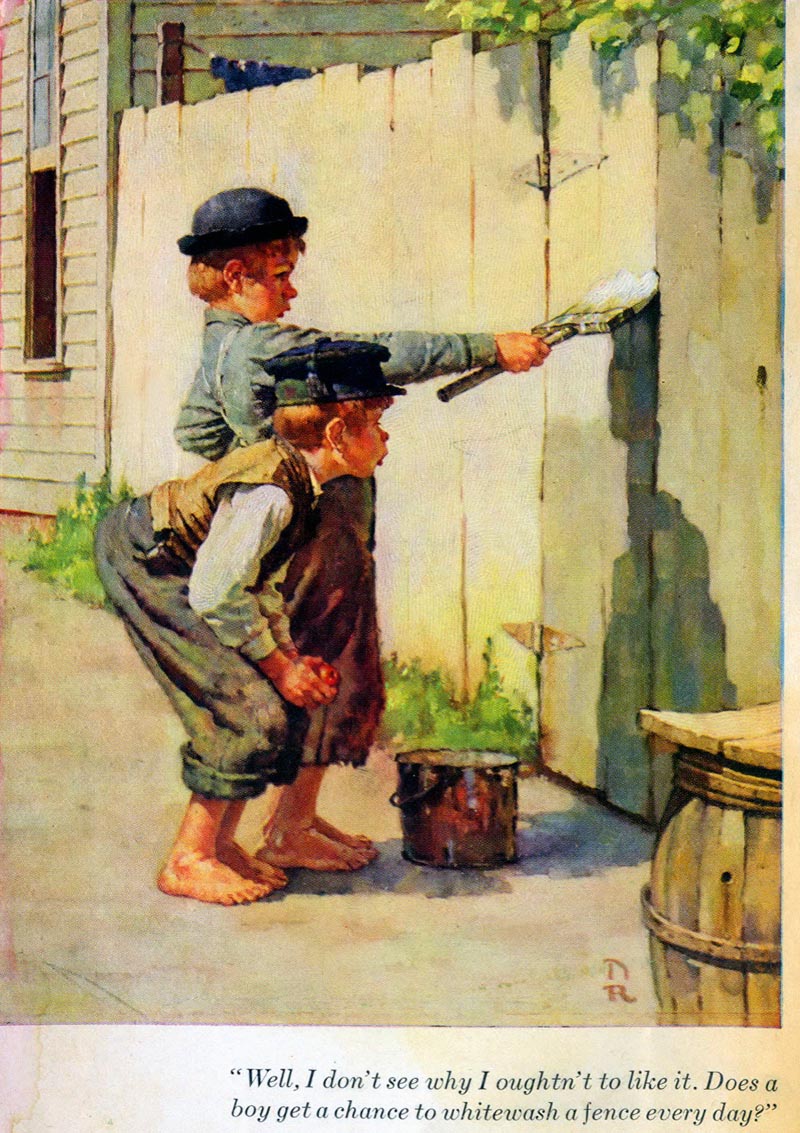
In part, this is because Rockwell illustrated for Heritage Press two of Twain’s most famous books, The Adventures of Tom Sawyer in 1936 and The Adventures of Huckleberry Finn in 1940. Above, see three of Rockwell’s illustrations from Tom Sawyer and, below, one from his Huck Finn. The differences between the two books (so hilariously contrasted by Louis CK), could stand for the two sides of both Twain and Rockwell. As the Mark Twain House puts it, “some critics have dismissed [Twain and Rockwell’s] work as lightweight, blithely ignoring the important statements they made on race.” Tom Sawyer is a lightweight book, the work of Twain the popular humorist. (Twain himself would say, “my books are water: those of the great geniuses are wine. Everybody drinks water.”) Huck Finn on the other hand is a serious adult novel with serious adult themes. For all of its flaws, it makes an admirable attempt to identify with and faithfully render the plight of enslaved people.
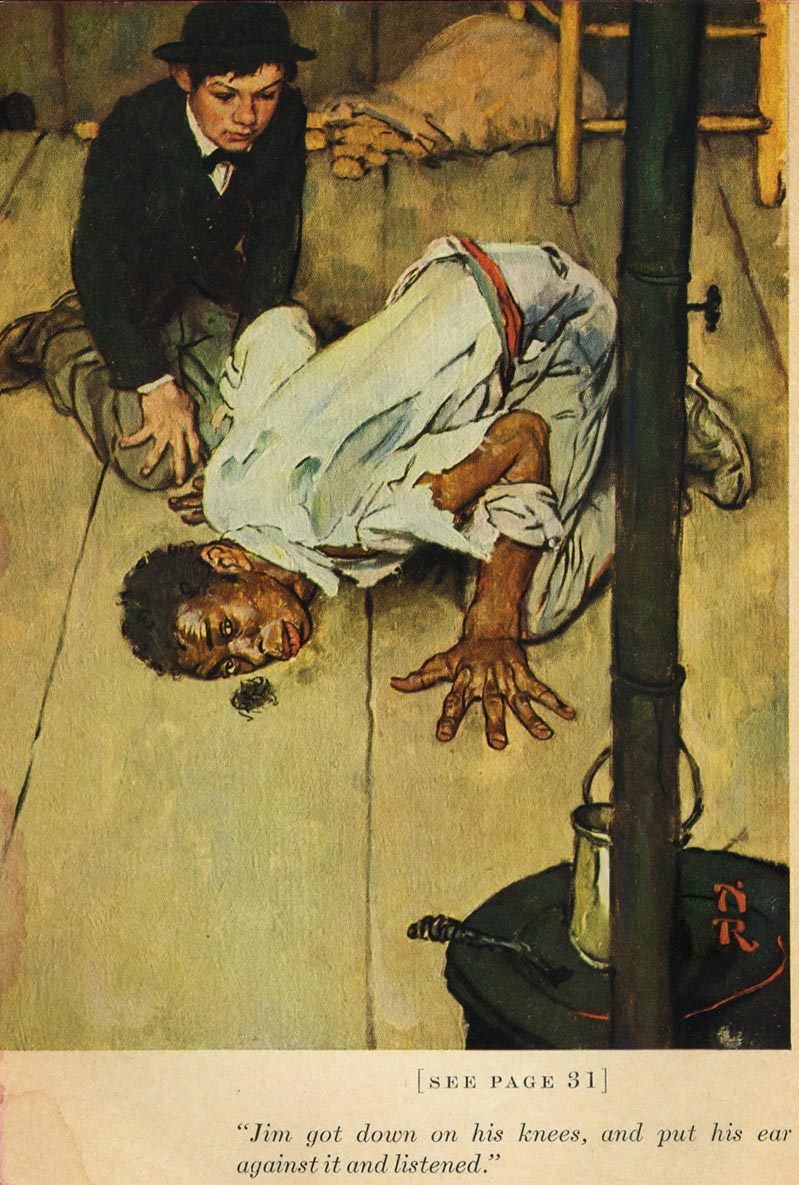
Twain’s great strength as a serious writer was his wealth of empathy, a quality Rockwell manifested as well. In fact, in order to best represent Twain’s books, the illustrator traveled to their setting, Hannibal, Missouri, where he “acquired a new respect for the characters,” writes the Norman Rockwell Museum. “The longer I worked at the task,” Rockwell wrote, “the more in love with the different personalities I became.” Illustration and design blog Today’s Inspiration points out that Rockwell purchased old clothes from the Hannibal locals to “soak up the atmosphere”: “Of all the illustrators (and there were quite a few) that illustrated these novels in the past, Rockwell was the first to visit Mark Twain’s home town. In typical Rockwell fashion, no amount of detail or research was ignored, faked or quickly glossed over.”
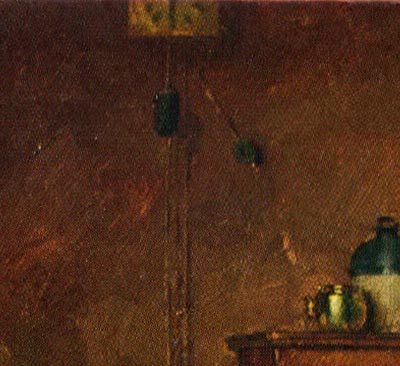
Today’s Inspiration zooms in on details from several of the Tom Sawyer paintings to show the fine, almost Vermeer-like attention Rockwell lavished on each illustration. The extensive examination of these early Rockwell classics makes a good case for the folksy illustrator as a “storytelling genius with pallet and brush.” Rockwell may be dismissed as a creator of kitsch, and in some cases the charge is justified, but—like Twain—even his lighter work depended on a fine attention to details of setting and characterization that make his work memorable and moving, in its corniest and its weightiest moments.
Related Content:
50,000 Norman Rockwell Photographs Now Digitized and Available Online
Bill Murray Gives a Delightful Dramatic Reading of Twain’sHuckleberry Finn (1996)
Mark Twain Writes a Rapturous Letter to Walt Whitman on the Poet’s 70th Birthday (1889)
Josh Jones is a writer and musician based in Durham, NC. Follow him at @jdmagness


… very nice text Mister Jones !
Thank you ! I love Rockwell.
“For all of its flaws, it makes an admirable attempt to identify with and faithfully render the plight of enslaved people.” Could be seen as damning with faint praise, considering the book is one of the greatest works of American literature?
I am looking for the picture of Tom and his pack. Can you help me? Thanks